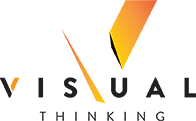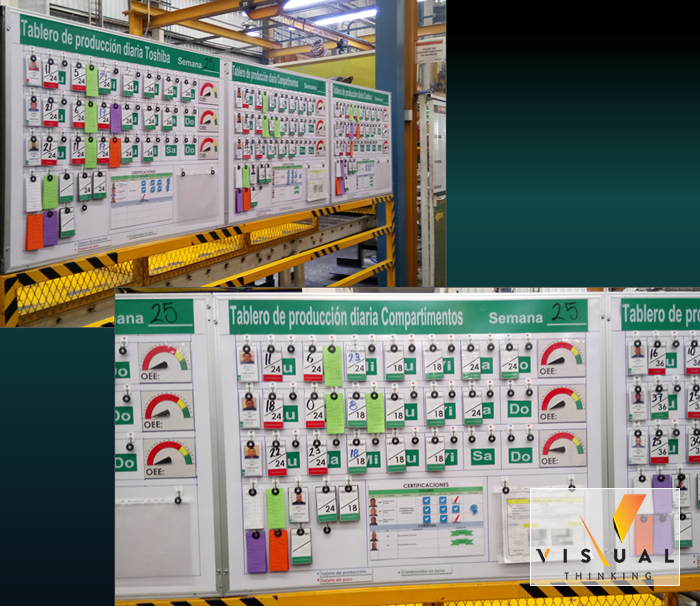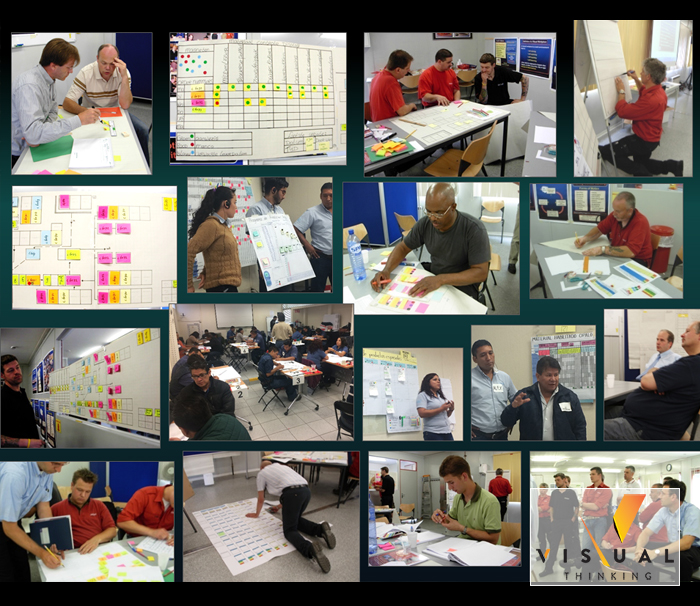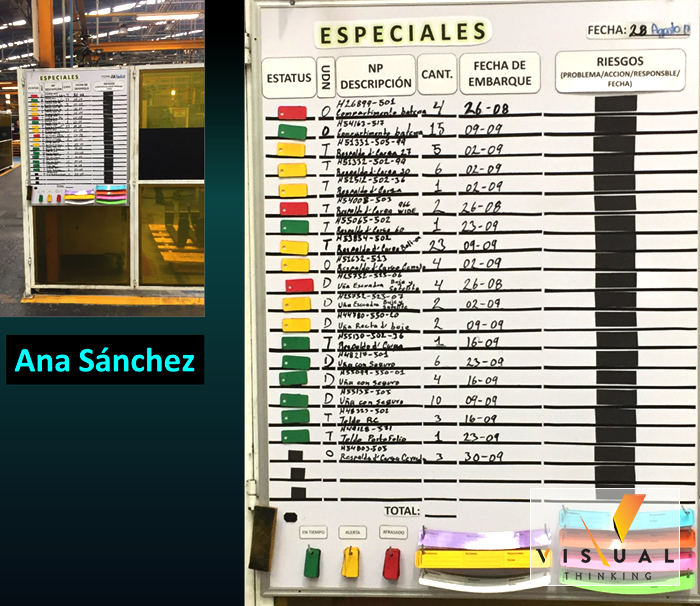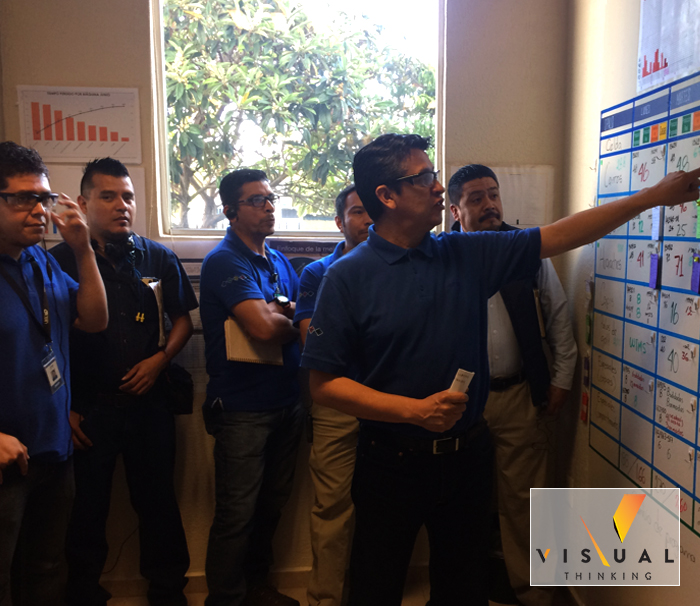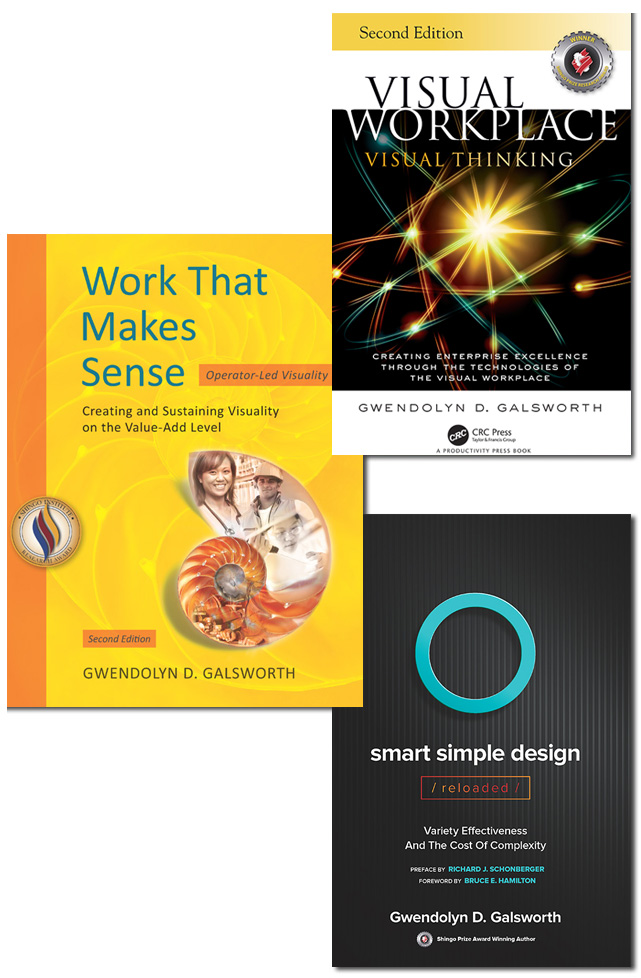Visual Displays & Visual Scheduling Boards
Management-by-Sight
Train your managers, supervisors, and engineers in visual displays and watch them solve supervisor-level problems, align schedules, coordinate solutions, and make a smooth transition to operational excellence.
Whether in an office or on the manufacturing floor, confusion, costly errors, and delays can become a way of life when workplace information changes quickly and often: schedules, customer requirements, engineering specifications, rush orders, methods, decisions, and the thousands of other details on which the daily life of an enterprise depends. Companies need a way to rapidly and accurately update and share this information and move forward.
Visual displays are that way.
- A visual display (aka, “visual board”) is a flat, inter-active format that is designed to communicate vital workplace information accurately and completely for all to see, without speaking a word, so your employees can understand the status of a situation at-a-glance, make sound decisions, and take rapid, meaningful action, based solely on the information on the display itself.
- Because displays are self-explaining, employees can be self-regulating, free to concentrate on adding value and not spending precious time and effort chasing down information before they can act.
Supervisors are supposed to know everything. And yet they cannot. They are defeated before they even begin. Likewise, managers are supposed to know everything—and what they don’t know, they turn to supervisors to supply. Particularly in a traditional manufacturing setting, the truth is one of the most elusive elements in the work environment. Look as we might, we simply cannot find it. We may see it moving across the distant horizon. But as we move towards it, it changes or simply disappears.
- Without an array of effective displays that capture the latest facts in real time, supervisors, planners, and managers are in a constant state of alert and alarm because one or the other operational element is—or is not—tipping in a favorable direction. As a result, key personnel have no idea when or how they should respond until a mission-critical issue actually happens. They are out of control.
- Visual displays are not redundant in this age of computers. Instead, they alone are capable of helping us evaluate multiple layers of competing messages from many sources—including from computers.
- Low-tech/high-impact visual displays offer an exceptional solution to chronic, costly, and complex information deficits in the workplace—even as they build alignment and the company’s improvement work culture.
What You Learn
- What visual displays are, how they work, and why they are so powerful
- The nine characteristics of highly-effective visual displays
- The 15 Add-Ons that make your display even more powerful
- How you can construct a display that dynamically changes—in real time
- Exactly why many scheduling boards fail
- The difference between team boards and visual displays
- To get your displays to “speak with each other” across functions and link operations together
- Differences between displays, digital monitors, and dashboards—and why they are all needed
- The telling difference between Management-by-Sight and Visual Management
- Dr. Galsworth’s step-by-step methodology for building highly effective visual displays
- Why these high-touch/low-tech visual solutions achieve remarkable high impact results
Who Attends: Supervisors, team leads, managers, your training, coaching, and CI staff and other change agents. We encourage you to invite staff from Planning/Scheduling, Purchasing, Maintenance, and Warehousing as well as value-add operations. Contact us.
Specifications
- This is a 1.5- to 2.0-day workshop when you and your team develop visual displays, hands-on, that are launched by the end of the session.
- Group size: 15 to 22 active participants.
- Two online coaching sessions with Dr. Galsworth are included to troubleshoot and strengthen your displays.
- Attendees receive a Visual Displays Participant Manual (150 pages) for use during the workshop and as an on-going reference, plus a copy of Dr. Galsworth’s Shingo Prize-winning book, Visual Workplace/Visual Thinking.
- When you are ready to schedule, our team will help you configure your specs for the maximum impact. Contact us.
“Galsworth’s passion for the topic and her experience and examples bring the benefits of visual/lean to light brilliantly. Her explanation of the training and implementation process made me readily understand where we are on our journey and how to tailor the process to fit our company”
Sam Wagner
Operations Chief
Fast Global Solutions




